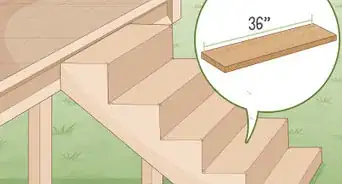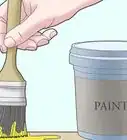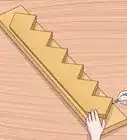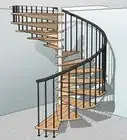This article was co-authored by Agustin Renoj and by wikiHow staff writer, Hunter Rising. Agustin Renoj is a Home Improvement Specialist with Renoj Handyman based in the San Francisco Bay Area. With over 18 years of construction experience, Agustin specializes in carpentry, painting, and exterior, interior, kitchen, and bathroom renovations. Renoj Handyman is a family-owned business that consists of craftsmen trained in all areas of construction.
There are 15 references cited in this article, which can be found at the bottom of the page.
This article has been viewed 32,533 times.
Do you have a wooden staircase in your home that has gaps between the steps? Even though open stairs are common, the openings could be a safety hazard if they’re too tall and aren’t up to code. Luckily, closing your stairs is an easy DIY project that only takes a few hours if you’re comfortable with a little woodworking. With a little bit of elbow grease, you can make your staircase safer!
Steps
Measuring and Cutting Your Wood
-
1Find the length and height of the gaps from behind each of your steps. Go underneath your stairs with a tape measure and find the length of the treads, which are the horizontal steps. Then, start your tape measure on the bottom edge of the same tread. Measure up to the bottom edge of the tread that's right above the first one. Write down your measurements so you don’t forget them later on.[1]
- Avoid starting your measurement from the top edge of the tread, or else you won't have enough material to attach the board properly.
- Don’t assume that all of the gaps are the same size since they may vary.[2]
- The required height between your stairs varies depending on where you live. For example, some areas only allow 4 in (10 cm) gaps while others may allow up to 8 1⁄4 inches (21 cm). Check your local building codes to see the minimum and maximum heights for your area.
-
2Buy enough 3⁄4–1 in (1.9–2.5 cm) plywood to fill the gaps. You can use any type of wood to build your risers, which are the vertical pieces between each step. If you want something that’s a little more durable to dings and damage, opt for pine boards. For a cheaper option, you can use MDF instead. Just ensure that it’s at least 3⁄4 in (1.9 cm) thick so you don’t accidentally kick or break through your risers.[3]
- You don’t need to use the same type of wood that’s on the stair treads. You can always paint, stain, or cover the risers so they blend in better.
Advertisement -
3Trim the boards down to size with a circular or table saw. Transfer the measurements you took for each gap and use a straightedge to draw them onto the wood. Put on safety glasses before you start working with your saw. Turn on your saw and slowly cut along the lines to cut each of your pieces.[4]
- As you cut each board, label them so you don’t forget what step to attach them to.
-
4Dry-fit the boards over the gaps to see if they fit tightly. Go behind your stairs again and position each of the new risers behind the steps. Make sure the edges are snug on the sides and the bottom doesn’t hang below the tread. If your pieces are too big, trim them down with your saw until they fit properly.[5]
- Be careful not to cut the risers too small, or else you’ll still see gaps between your steps. If you do cut the pieces too small, you may need to start over with a new piece of wood.
Installing the Risers
-
1Pre-drill 3–4 holes 1⁄2 in (1.3 cm) from the bottom of each riser. Attach a drill bit to your drill that’s slightly smaller in diameter than the screws you plan on using. Measure up 1⁄2 in (1.3 cm) from the long bottom edge of your riser. Make your first hole about 1 inch (2.5 cm) in from the end of the riser. Make the rest of your holes evenly spaced along the entire length of the board.[6]
- Pre-drilling your holes prevents the wood from splitting when you drive screws through it.
-
2Apply a line of wood glue across where you drilled your holes. Choose the face of the board that has the cleanest appearance for the front of the riser. Squeeze a thin line of wood glue starting from the first hole along the edge. Make a straight line of glue crossing through all of the holes to the other end of the riser.[7]
- Wood glue offers additional support so your risers are less likely to come off or squeak.
-
3Screw the riser into the back of the step. Position the riser behind your stairs so the line of glue presses onto the back edge of the tread. Feed 2 in (5.1 cm) screws into each of the holes and use an electric screwdriver to tighten them. Keep screwing them in until the heads are flush with the back of the riser.[8]
- Attach C-clamps to the riser and tread if you have trouble holding it in the correct position.
- If your stairs are made from a hardwood like mahogany, insert your drill into the riser’s holes and pre-drill into the back of the tread so you don’t damage your steps.
-
4Drill 3–4 holes through the top of the tread into the top of the riser. Get out from underneath your stairs and walk up to the step that you're working on. Position your drill on top of the step about 1 inch (2.5 cm) in from the front edge. Slowly push your drill through the tread to make a hole that goes into the top of the riser you just screwed in. Make 2–3 more holes along the length of the tread so they're in line with the screws you used on the bottom edge of the riser.[9]
-
5Countersink screws into the top of the riser. Countersinking screws is when the tops of your screws sit flush with the surface. Insert your screws into the holes you just drilled and use your screwdriver to tighten them down completely. Make sure the tops of the screws are flat along the top of the tread when you’re finished attaching them.[10]
- If you don’t countersink your screws, then you could catch your foot on the raised screw heads and injure yourself.
-
6Attach the remaining risers to the rest of your steps. Continue working up your stairway, adding the risers one at a time. Make sure each of them fits securely and doesn’t move or wobble when you’re finished installing them.[11]
- You may need to stand on a step ladder to reach the taller steps from behind.
Finishing Your Stairs
-
1Caulk along the seams behind each riser. Go behind your stairs and position the tip of a caulk gun where the edge of the riser meets the stringer, which is the angled piece on the side of your stairs that supports the steps. Pull the trigger to apply a thin bead of caulk along the side and top seams of the riser. Smooth the caulk out with the tip of your finger and let it dry for 24 hours.[12]
- Caulk helps prevent your stairs from squeaking as well as offers additional support.
-
2Hide the screw heads with wood filler. Choose filler that closely matches the natural color of the wood you used. Squeeze a fingertip-sized amount of wood filler onto each of the screw heads. Use a putty knife to smooth the wood filler against the surface so it looks flush with the rest of the surface. Let the wood filler dry and harden completely before moving on.[13]
- You can buy wood filler from your local hardware store.
-
3Paint the risers if you want to match your steps. Rough up the surface of the risers with some 180-grit sandpaper so it accepts paint, and brush off any dust with a hand broom. Stick painter's tape on the treads where they connect to the risers so you don’t get paint on them. Apply 1 coat of primer to each of the risers, starting from the top step and working your way down to the bottom. Let the primer dry for 4–6 hours before lightly sanding the bumps down with your sandpaper again. Then, apply your paint in long horizontal strokes with a paintbrush starting from the top and working toward the bottom. Let the paint dry for another 6 hours before peeling off the tape.[14]
- If you need another coat of paint, apply it after the first coat dries. Then let the second coat dry for another 6 hours.
- Keep your brushstrokes going in the same direction to give each of your risers a nice, uniform look.
-
4Cover the risers with veneers for a more decorative appearance. Buy wood veneers from your local home improvement store that match or complement your treads. Cut the veneers to the sizes of your risers with a pair of scissors. Carefully peel the backing off of the veneers and press them tightly against the fronts of your risers. Use a rubber roller to get rid of any bubbles or bumps in the veneers.[15]
- Veneers are an affordable option if you want to make your risers look like they’re made from more expensive wood, such as oak or mahogany.
Things You’ll Need
- Measuring tape
- 3⁄4–1 in (1.9–2.5 cm) plywood or MDF
- Table or circular saw
- Drill
- Wood glue
- 2 in (5.1 cm) screws
- Caulk
- Wood filler
- Paint (optional)
- Wood veneers (optional)
Warnings
- Stairs that have gaps larger than 4 in (10 cm) are not up to code since they could cause injuries if you slip.[16]⧼thumbs_response⧽
- Don’t assume that each of your stairs are the same height when you’re cutting new risers. Measure each one to ensure you make them the right size.[17]⧼thumbs_response⧽
References
- ↑ https://www.youtube.com/watch?v=S0zPIAGsDrk&t=48s
- ↑ https://www.woodfloorbusiness.com/installation/stair-treads-dos-don-ts.html
- ↑ https://www.youtube.com/watch?v=lg4wgAvkK5Y&t=173s
- ↑ https://www.youtube.com/watch?v=S0zPIAGsDrk&t=87
- ↑ https://youtu.be/lg4wgAvkK5Y?t=173
- ↑ https://www.youtube.com/watch?v=S0zPIAGsDrk&t=109
- ↑ https://www.bayerbuilt.com/Resources/Installation/Stair%20Parts/Adding%20Skirts,%20Treads,%20and%20Risers.pdf
- ↑ https://youtu.be/lg4wgAvkK5Y?t=374
- ↑ https://www.bobvila.com/articles/how-to-fix-squeaky-stairs/
- ↑ https://youtu.be/MJrhW3H3Biw?t=279
- ↑ https://youtu.be/lg4wgAvkK5Y?t=446
- ↑ https://www.youtube.com/watch?v=S0zPIAGsDrk&t=216
- ↑ https://www.bobvila.com/articles/how-to-fix-squeaky-stairs/
- ↑ https://youtu.be/SeY45UfRq68?t=15
- ↑ https://www.thisoldhouse.com/stairs/21124779/how-to-update-oak-stair-treads-and-risers
- ↑ https://youtu.be/PB8jT_iyC3c?t=42
- ↑ https://www.woodfloorbusiness.com/installation/stair-treads-dos-don-ts.html
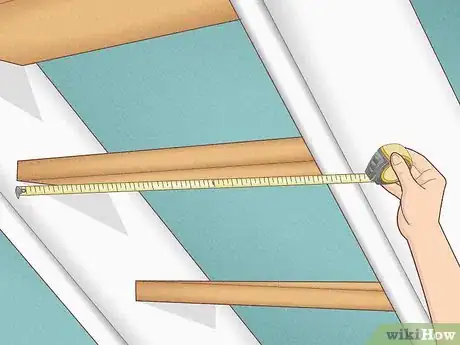
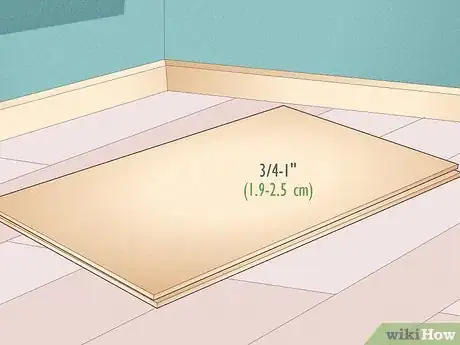
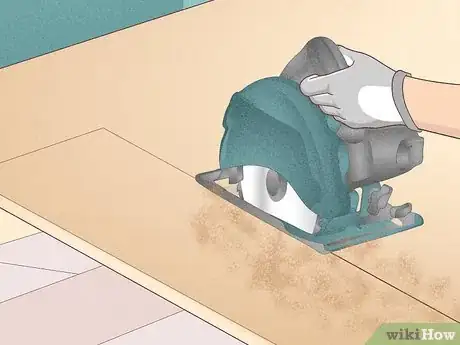
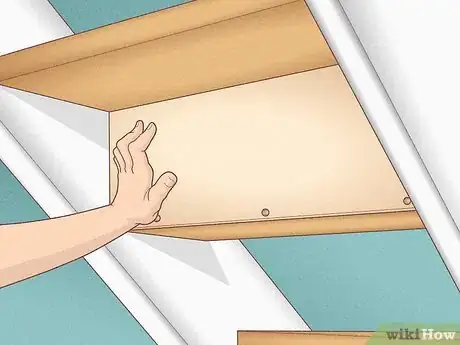

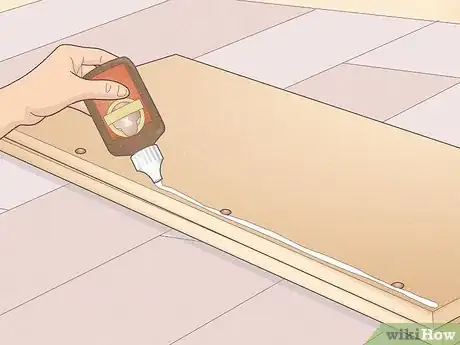


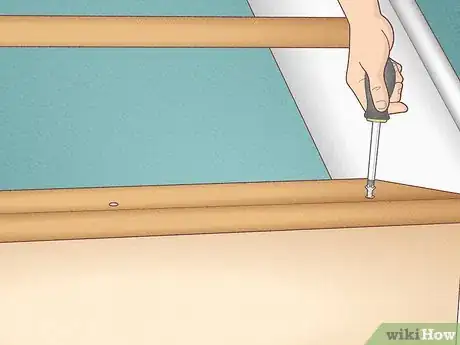
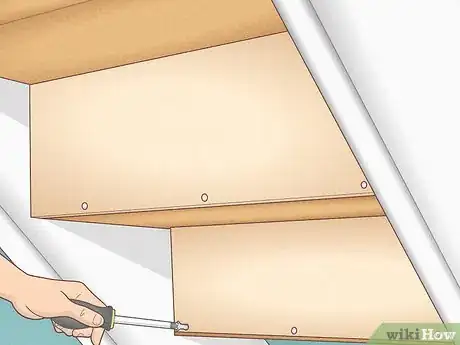
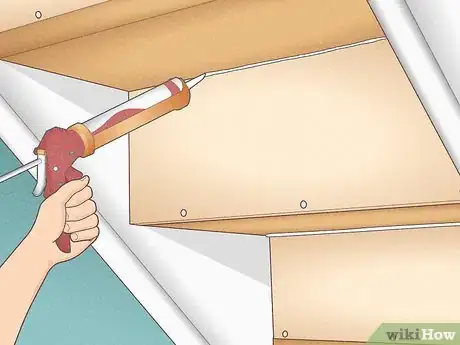
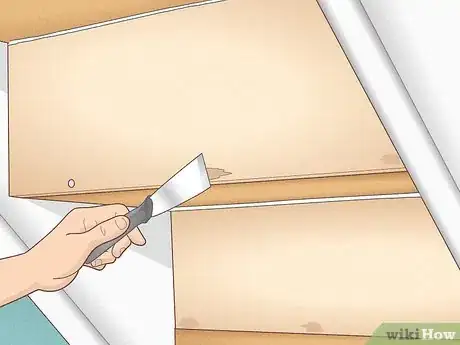
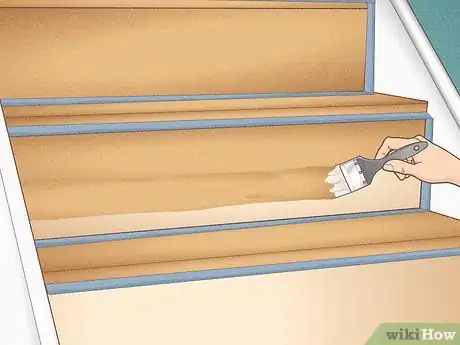
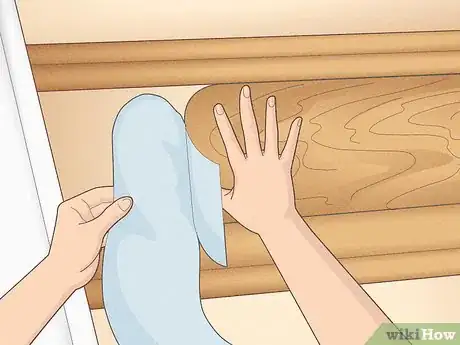


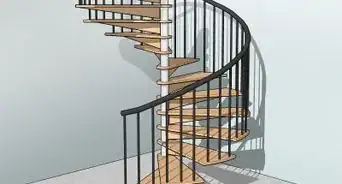
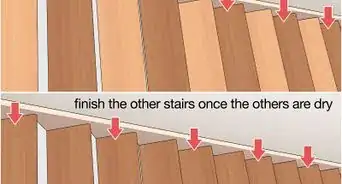


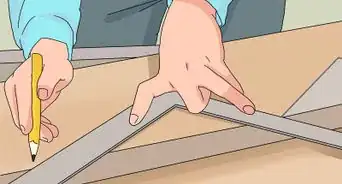
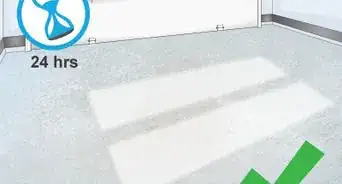

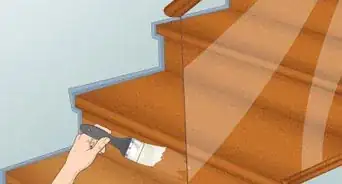
-Step-19.webp)
